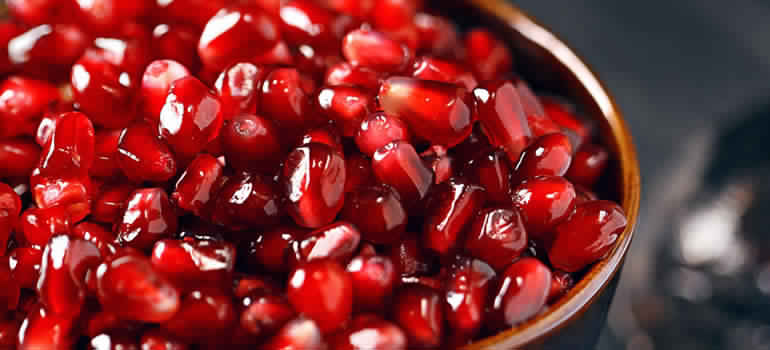Pomegranate
products

The most important types of pomegranates are:
- M116: Its size is small to medium and color is red from outside.
- Asyuti Pomegranate: Its size is small to medium and color is red from inside and outside.
- Native Pomegranate: Its size is medium to large.
- Wonderful Pomegranate: Its size is medium to large.
Packing: Pomegranate is packed in open cartons (open top) weighing 5 kg and each carton contains (6 to 14 fruits). It is packed in plastic containers weighing 20 kg. Pomegranate tree has beautiful white and red flowers that turn into a delicious fruit having a crimson or yellow reddish color skin called Golnar. The cover of this fruit contains hundreds of bright red or white color water grains. Every grain includes a solid or soft seed according to the quality and variety of pomegranate. Pomegranate is a shrub that reaches a height of 6 meters with pendulous branches and thorns in the edges. Its branches and leaves are close to the red color. Its flowers have a light red color with a beautiful shape. The fruit is spherical bearing a crown, and its rind has a skinny texture.
The fruit contains many red seeds or sometimes close to the white color but mostly the seeds have the ruby red color. The leaves fall in autumn and so the pomegranate tree is not evergreen. Pomegranate blossoms are called Glonar, which is an Arabization to the Persian word Kolnar that means pomegranate blossoms. Pomegranate is known in Hieroglyphics as" ramen "and in Coptic language as "Erman". Pomegranate contains a lot of vitamins and substances that are important for the functions of the body. The fruit includes the following: protein, vitamins, minerals, dietary fiber, antioxidant and 234 calories on average. Moreover, by eating pomegranate, the human body becomes capable of resisting a variety of diseases including cancer, osteoporosis, Alzheimer, blood pressure, cholesterol, diabetes and liver diseases.
| JAN | FEB | MAR | APR | MAY | JUN | JUL | AUG | SEP | OCT | NOV | DEC |
 |
 |
 |
- Season: August till October